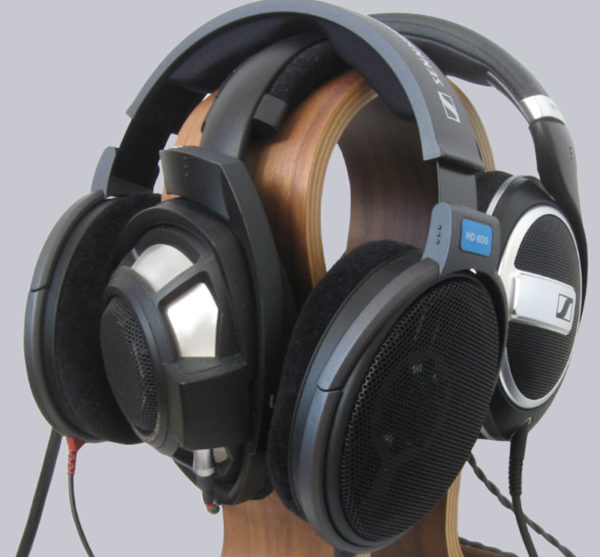
Practical testing …
A selection of different music tracks from various artists and genres was listened to subjectively. The songs are available to the tester either as FLAC files or in master quality from a known streaming service, so they are at least CD quality. The tracks used here can usually also be found on YouTube with a corresponding quality gradation. The listening process should cover as broad a spectrum of music as possible and find the headphone’s special talents and shortcomings. In this context, we compared the Sennheiser HD 599 SE with an HD 600 and HD 800S. This comparison might seem unfair at first, since the top model 800S has an MSRP of not particularly decent 1799 Euros. Here, however, it is to work out the differences in the series and certain dimensions of the abstinence of a typical Sennheiser sound to present. Ultimately, it may help with the purchase decision to extract the personal preference from the following descriptions. The 800 S does not score best in all genres.
| Sound aspects – Title 1 | |
| Title and band/interpret | Takayuki Hattori/Yu-Yu, Gundam the Origin |
| Sennheiser HD 599 SE | Harp strongly nuanced, audibly withdrawn towards the top, comparatively full voice in the lower range | Sennheiser HD 600 | Harp comparatively round, voice more natural, somewhat brighter and spatially freer/airier |
| Sennheiser HD 800S | Harp strongly nuanced, piercing high voice in full spatial development |
Compared to the HD 600, high female voices on the 599 seem downright flat; they lack the necessary brilliance in the higher frequency range. Surely to the surprise of many a reader, the harp comes across more concisely and edgier on the less expensive 599, in other words in a more detailed playing style than on the 600. It is certainly more strenuous to listen to the analytical 599 than to the more “natural” sounding 600. Incidentally, the contact pressure is somewhat higher on the 600 than on its smaller counterpart. Both the 599 and the 600 belong more to the variety of very intimate and minimally warm playing headphones. As a commonality with the 800S, the 599 shares the rather analytical character with regard to the harp, whereby the 800S absolutely must be driven by an amplifier. Thereby, it unfolds an unimagined spatiality, after which Yu-Yu’s voice spreads out practically indefinitely and doesn’t come to any audible end. In return, the sibilants stand out very piercingly and unpleasantly without an equalizer. At the end, the 600 arranges itself most credibly with any verses.
| Sound aspects – Title 2 | |
| Title and band/interpret | Mild Minds, Oblivious |
| Sennheiser HD 599 SE | very edgy beginning, quite a lot of body in the lower frequency range | Sennheiser HD 600 | electronic sounds are played very legato, but still detailed |
| Sennheiser HD 800S | very edgy beginning, too bright and thus somewhat tinny electronic sounds |
Although this song once again features a voice that automatically plays to the 800S in terms of spatiality with a bit of artificial reverberation, the electronic sounds of the piece are what we’re talking about here. So let’s ignore the spatial depth of the presentation and above all the soft and round vocal presentation of the 600, which only gives the male voice a prominent overpresence in its higher frequency range. The 800S and the 599 SE don’t really want to “play in one piece”, although Oblivious is indispensably about the merging of the individual sound elements. Especially the punchier and more powerful mixes don’t need additional energy and separation. Due to the greater harmony, the 600 therefore plays most likely in a way that is conducive to the piece of music, namely in a comparatively bound and relaxed form.
| Sound aspects – Title 3 | |
| Title and band/interpret | Zola Blood, Meridian (Applescal Remix) |
| Sennheiser HD 599 SE | quantity present in the lower frequency range leads to spatial depth, electric guitar very prominent/isolated from background noise | Sennheiser HD 600 | detailed hihats, electric guitar blurs a bit more with the sounds wafting darkly in the background |
| Sennheiser HD 800S | Electric guitar clearly too bright, very pointed hihats |
In the third test, the genre question arose and it was obvious that the 800S would allow the best acoustic arrangement of instruments from quartet size in classical music, even if it appears a bit too sharp-edged in the treble to its disadvantage. Since there was still a lack of instruments in the previous setup, rock music with electric guitar and hihats is just right. Even if this test is in no way meant to suggest that the 599 is a “bass monster”, at least in comparison it brings out stronger guns in the low frequency range and also separates the electric guitar more strongly. In the area of modern rock – although electronically supported in this case – the 600, on the other hand, lacks the necessary purism to give the electric guitar the necessary prominence. In contrast, the 800S even exaggerates the representation of the instrument, resolving in the highest detail the hihats and generating space entirely without the “bass body” of a 599 (as said in comparison). In the end, the mixture of analysis and the at least present bass (or, depending on the interpretation, the withdrawn treble) can best give the 599 SE the attribute of a “rock-headphone”. It should be noted here how Sennheiser generally suffers from a “roll-off” in the sub-bass, but the lower frequency range can still sound very different across the entire portfolio, as it depends on the tuning in the rest of the frequency spectrum and of course the strength of the dB drop below 50 Hz.
Sennheiser HD 599 SE result and general impression …


